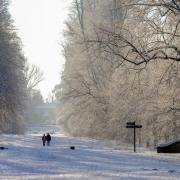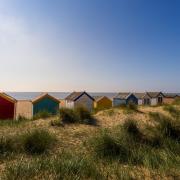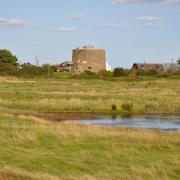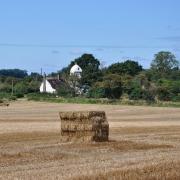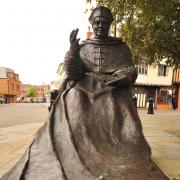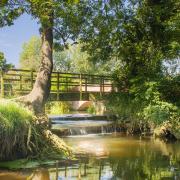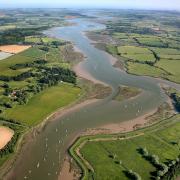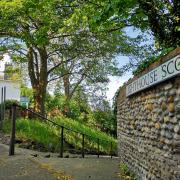David Falk, manager of Suffolk County Council’s Brandon Country Park, delves into the woods around Mildenhall to explore the fascinating world of warrens, coneys and poachers

In 1814, 22-year old Robert Plum found himself on a ship sailing to Australia. Shackled and imprisoned with drunks, thieves and murderers, Robert spent seven months afloat in typhoid-infested conditions before arriving in Sydney Harbour and incarceration in a penal colony. His crime? He stole a rabbit from a warren in the Brecks.
The story of poachers taking coneys from the warrens of East Anglia is captured in fascinating detail on the Warrener’s Walk. The walk explores Mildenhall Warren, which sits like an island in the very heart of Mildenhall Woods, and is a faint remnant of the many warrens that once stretched across the Brecks. This was perfect rabbit breeding land, vast acres of sandy, easy to burrow into soil separated by long belts of pine trees. The same land that was almost useless for growing crops, was perfect for farming rabbits on an industrial scale.
The Warrener’s Walk starts at a quiet car park off a dead end road in the midst of beech woodland. Ahead, a path bends its way over bronze leaf litter dotted with stones of china-white flint. As I start the walk I pass ivy-chocked trunks and thicket of straight silver birch. I pass monumental, fissured pines, broad squat oaks and twisted sweet chestnuts. Crows squawk in the distance, wood pigeons float by in groups and a green woodpecker calls its alarm as it flies. The path turns into a wide glade and I begin a gentle ascent.
The early morning sun bathes the woodland in a golden light, highlighting yellow speckled gorse bushes. A pair of goldcrests dance in the gorse. Their yoke-yellow headbands shine bright in the morning glow. A blue tit pecks delicately in the cracked bark of a birch tree. From somewhere a pheasant honks goose-like. Overhead an aeroplane vapour trail splits the deep blue sky into two.
I stop at an information panel. It contains a wealth of information. In the Middle Ages adult rabbits were called coneys, only the young were called rabbits. Warrening began here in Mildenhall in 1323 with the coneys sent to London to feed a never-ending demand for meat and fur. The trade was so lucrative that by the middle of the 17th century there were 26 warrens in the Brecks. Fur factories opened up in Brandon in 1790. It’s no wonder that the lure of riches enticed the young and foolish to poach.
Beyond the panel at the end of a rise I see the outline of a squat, stone building. I approach the Warrener’s Lodge and admire its solid construction. Its flint walls are patched in lime mortar. There are heavy stone lintel window frames and the whole construction is topped with a red tiled roof. It reminds me of a Tuscan farmhouse, rustic shabby-chic. Rusty metal spikes protrude from the flint walls. These were used to hang rabbits before their three-day journey to the capital. The lodge was restored from near ruin just three years ago and an open doorway and metal frame allows you to take a single step into the world of the warrener. Inside I can see the lodge had two floors. The ground floor was the workshop and storeroom, upstairs was where the warrener and his family lived. He also used this elevated position to watch over the warren for poaching was rife and often violent. I peer into the gloom and make out a fireplace, a stove and a metal bed frame.
I leave the lodge behind and walk on through the woods. The rising sun sends shafts of brilliant light onto the path. They spotlight the route ahead like a performance on a dance floor. The light illuminates beams of mist and creates deep, dark shadows. To my right lies a line of ancient pines. They seem to humanise the woodland with their twisted, bent forms, red-orange bark and tufts of needles silhouetted in the daytime glow.
A wren whirls by as I approach another information panel. This one tells the story of farming and how ferrets were used to drive the rabbits out of their burrows, only for lurchers to pick them off one by one. Beyond the panel the path continues, doglegging its way along wide grassy tracks. At the edge of the warren the path turns to follow a shallow mound, the remnant of the warren bank. It once stood up to two metres high with a 10 metre sloping side. The side facing the warren was steep, topped with thickets of gorse. This was all that kept the rabbits inside and the bank needed constant attention.
Today wispy strands of grass top the bank. They sway like hair in the wind. In the branches of a nearby oak tree rosy pink long-tailed tits and pale azure blue tits play together. I see a chaffinch with its orange sorbet chest. A coal tit hangs on a twig, its head striped like a badger. And beyond the oak lies an arable field. It stretches out to the horizon where a long line of tall twisted pines march into the distance.
The path turns back into the woods and I come to the final information panel. Here I learn that this land became the property of the Forestry Commission in 1934. Warrening had nearly come to an end, the production of wood was now the nation’s priority. However, warreners were still employed, and right up until the late 1990s they worked this land. Indeed without them, the young saplings may never have taken hold. I’m soon back at the small car park where I started. As I prepare to leave I recall the variety of wildlife I’ve seen and heard throughout my walk and all I’ve learnt. And then I realise, that despite the history of the area, I haven’t seen a single rabbit all day.










